This article was co-authored by Padam Bhatia, MD. Dr. Padam Bhatia is a board certified Psychiatrist who runs Elevate Psychiatry, based in Miami, Florida. He specializes in treating patients with a combination of traditional medicine and evidence-based holistic therapies. He also specializes in electroconvulsive therapy (ECT), Transcranial Magnetic Stimulation (TMS), compassionate use, and complementary and alternative medicine (CAM). Dr. Bhatia is a diplomat of the American Board of Psychiatry and Neurology and a Fellow of the American Psychiatric Association (FAPA). He received an MD from Sidney Kimmel Medical College and has served as the chief resident in adult psychiatry at Zucker Hillside Hospital in New York.
There are 11 references cited in this article, which can be found at the bottom of the page.
wikiHow marks an article as reader-approved once it receives enough positive feedback. In this case, 80% of readers who voted found the article helpful, earning it our reader-approved status.
This article has been viewed 60,826 times.
Obsessive-compulsive disorder, or OCD, is a serious psychiatric disorder that involves uncontrollable and reoccurring thoughts called obsessions in addition to unusual, repetitive behaviors known as compulsions. People with this disorder may experience problems performing at work or school. They may even have trouble getting things done because of their constant obsessive thoughts or compulsive behaviors. Fortunately, with the appropriate approaches, OCD can be effectively managed. Learn how to overcome your OCD.
Steps
Getting Professional Treatment
-
1Locate a qualified therapist in your area. OCD requires intensive professional treatment. If you suspect you are suffering from this disorder, you must seek out a treatment provider who has experience working with OCD patients. This person will evaluate you to confirm that you are, indeed, experiencing OCD symptoms.[1] He or she will also determine if you are suffering from another co-existing mental illness.
- For help finding a mental health provider in your area, you may contact the Substance Abuse and Mental Health Services Administration Treatment Referral Helpline at 1-800-66-HELP.
-
2Discuss your treatment options. Once you have a confirmed diagnosis of obsessive-compulsive disorder, you should ask your mental health provider about different treatment approaches. Like many mental disorders, OCD is best treated through with therapy, medications, or a combination of these two approaches.Advertisement
-
3Find out which forms of therapy are available to you. Previously, OCD was thought to be resistant to treatment. Most recently, there are a variety of therapeutic approaches developed to treat the disorder. Talk to your therapist about which is the right choice for you.
- The treatment options that work most effectively are Cognitive/Behavioral (CBT) and a type of CBT called Exposure/Response Prevention (ERP) therapies. These therapies are geared towards helping a person with OCD manage obsessive thoughts and also exposing him or her to distressing situations.[2]
-
4Ask your therapist if medications will help with your symptoms. If your therapist recommends medication, you will need to schedule an appointment with a psychiatrist to discuss which prescription will be the right choice for you.[3] Serotonin reuptake inhibitors (SRIs) and selective serotonin reuptake inhibitors (SSRIs) are commonly prescribed to patients with OCD.[4]
- Keep in mind that medications may take 8 to 12 weeks to demonstrate any improvements. If you are prescribed meds, don’t stop taking them too soon because you think they’re not working. Give them the appropriate amount of time.
- Always talk to your psychiatrist before making any changes to your medication regimen.[5] You will also need to contact your doctor to let him or her know about any side effects of the medication.
-
5Join a support group. Support groups are often led by therapists who are trained to treat OCD or by individuals who have conquered the symptoms of OCD. Participating in a group format can help you feel less alone with the disorder and even teach you helpful tips about how others manage their symptoms.
- If your therapist cannot refer you to a local support group, check out the list available at the International OCD Foundation.[6]
Managing Obsessions and Compulsions
-
1Accept your thoughts and move on. OCD thrives on your resistance to obsessive thoughts, as well as your negative emotional reactions to them. If you have obsessions, don't try to reason with the obsessive thoughts as this will only intensify your symptoms. OCD is full of intrusive, irrational thoughts and you cannot reason your way to serenity.
- Try using mindful acceptance to deal with these issues. Accept and allow your unpleasant feelings, and just observe them without judging or reacting to them. Then, focus back on the present moment and all of your sensations. If you are busy focusing in on the here and now, you won't have time to worry about the future.
- It may be helpful to simply accept and agree with the obsessive thought. Consider the possibility that your fear will come true, and try making a compromise with that possibility. For example, if you have an obsessive thought about dying from pneumonia from touching the shopping cart, the world ending tomorrow, or a meteor falling on you and your family, you could say: "Well, those scenarios are all possible, but the odds of all these situations happening are extremely low. No matter what, I'm going to let go of what I can't control, stop worrying about these possibilities, and enjoy whatever time I have left. That way, if any of these things do happen, at least I will have had a good time and spent my last moments well. I will now let go of these thoughts and my need for absolute certainty, and I'll bring my attention to my shopping in the present moment." It may sound counter-intuitive and even ludicrous, but this technique is often used in therapy and works. Simply acknowledge the thought and accept whatever worst case scenario your mind has concocted and move on.[7]
-
2Establish a worry period. If your obsessive thoughts seem to consume your entire day, attend to them all at once during a specified time. Depending on how many worries you have throughout a day, choose one or two short, 10-minute windows to attend to your obsessive thoughts. This tactic helps you acknowledge obsessions without trying to suppress them.[8]
- Choose a time that’s sufficiently spaced from your bedtime so that you aren’t kept up each night. Throughout the day, jot down a few notes about the worries that cross your mind. Tell yourself you will think more on them during your worry period.
- When it’s time for your worry period, focus on all the urges and thoughts that have flooded your mind during that day. Allow yourself to obsess about them for the given time frame. Once the window closes, take a deep, calming breath and let the worries go.
-
3Prepare a list of go-to distractions. Like other forms of anxiety, you can manage your OCD symptoms by shifting your attention. When incessant obsessions and behaviors seem to be coming to a head, distract yourself by refocusing your attention.[9]
- It is handy to create a list of helpful activities that may serve as distractions. For example, you might include calling a friend, taking your dog for a walk, going swimming, listening to music, or any other pastime you enjoy.
- Delay the urges for at least 15 minutes by engaging in the distraction activity. At the end of the time period, examine your thoughts and urges. If they are still strong, continue the activity so that you can delay the obsessions and compulsions for as long as possible.
-
4Expose yourself to your fears, slowly and gradually.[10] Compulsions are often done to protect you from some fear. Before now, you may have been trying to avoid any of your fears in order to prevent the compulsive behaviors. Unfortunately, when you avoid your fears, they only grow larger in scope.[11]
- Expose yourself to one of your triggers. Let’s say, you are sitting on the couch watching TV and suddenly question whether you locked the door. Sit with the feeling of anxiety without giving into the urge. Resist for as long as you can. When you do give in, try to limit the repetitions of checking the door again and again. Over time, you should feel less and less anxiety when faced with that trigger.
- Like with exposure and response prevention training that you may do with your therapist, you can also systematically expose yourself to distressing situations on your own. Be sure to only do this when you have successfully practiced with your therapist and have outlined coping strategies to complete if the anxiety becomes too much.
Practicing Self-Care
-
1Do relaxation exercises. When you are stressed, your OCD symptoms may occur more frequently and with greater intensity. Managing stress can help you to decrease the episodes. It is best to find a few relaxation exercises that work for you and practice them daily. Therefore, when you need them in the heat of them moment you can do them easily. Common relaxation techniques for OCD may include:[12]
- Deep breathing- Sit comfortably, either erect in a chair or lying on your back on a sofa or bed. Release the air from your lungs. Now, take a slow, calming breath in through your nose for 4 counts. Hold the breath for 7 counts. Exhale through your mouth for 8 counts. Repeat the process until you feel more calm.
- Visualization- Sit comfortably. Close your eyes. Breathe deeply. Call to mind a place where you feel completely safe. It can be a place that you know like your childhood bedroom, or an imaginary place such as an exotic beach or a lakeside cabin. Use your senses to connect with this place. Think about how it smells, sounds, feels, or tastes to be there. Use your mind to vividly create a thorough 3-dimensional picture of this place. Activate as many senses as you can. This exercise can be carried out with your therapist, on your own, or with a guided video from YouTube.
- Progressive muscle relaxation- Sit on a sofa or lie down on a bed. Relax your muscles. Inhale and exhale deeply. Starting with your toes, clench the muscles tightly. Notice how that feels. Hold them like this for a few seconds, then release the tension. Notice how it feels to let go of that tension. Now, move up to your knees. Contract those muscles, holding them this way for several counts. Release. Move upwards until you have progressively contracted each muscle group.
-
2Get some endorphins to improve your mood. Staying physically active is not only good for your physical health, but your mental health, too. Getting just 30 minutes of exercise each day can help you develop greater mental strength to control your obsessions and compulsions. For those with anxiety such as in OCD, exercise can also help take your mind off your worries.
- Exercise releases feel-good chemicals in your body called endorphins. These chemicals can relieve negative mood states and make you feel happier and more confident.[13]
-
3Sleep adequately to minimize anxiety. Sleep may seem unrelated to your OCD symptoms, but surprisingly, not getting enough sleep or having poor quality sleep can worsen anxiety. Try to get at least 7 hours of sleep each night while aiming for 9.
- You can improve your sleep habits by removing caffeine from your diet, retiring and rising at the same times each day, developing a routine in which you unwind before bed, and making sure your bedroom is conducive to quality sleep.[14]
-
4Surround yourself with a positive support group. Having any sort of mental disorder can make you feel isolated from others around you. However, withdrawing from friends and family can actually make you feel worse than you already do.[15] Of course, you should not depend on anyone else to help you manage OCD, but spending time with those who love and support you can give you the confidence and accountability to be steadfast in your treatment.
Expert Q&A
-
QuestionWhat can I do to help make my OCD go away?
 Padam Bhatia, MDDr. Padam Bhatia is a board certified Psychiatrist who runs Elevate Psychiatry, based in Miami, Florida. He specializes in treating patients with a combination of traditional medicine and evidence-based holistic therapies. He also specializes in electroconvulsive therapy (ECT), Transcranial Magnetic Stimulation (TMS), compassionate use, and complementary and alternative medicine (CAM). Dr. Bhatia is a diplomat of the American Board of Psychiatry and Neurology and a Fellow of the American Psychiatric Association (FAPA). He received an MD from Sidney Kimmel Medical College and has served as the chief resident in adult psychiatry at Zucker Hillside Hospital in New York.
Padam Bhatia, MDDr. Padam Bhatia is a board certified Psychiatrist who runs Elevate Psychiatry, based in Miami, Florida. He specializes in treating patients with a combination of traditional medicine and evidence-based holistic therapies. He also specializes in electroconvulsive therapy (ECT), Transcranial Magnetic Stimulation (TMS), compassionate use, and complementary and alternative medicine (CAM). Dr. Bhatia is a diplomat of the American Board of Psychiatry and Neurology and a Fellow of the American Psychiatric Association (FAPA). He received an MD from Sidney Kimmel Medical College and has served as the chief resident in adult psychiatry at Zucker Hillside Hospital in New York.
Board Certified Psychiatrist You might not be able to make it go away completely, but you can help manage your symptoms by regularly seeing a therapist and taking medications.
You might not be able to make it go away completely, but you can help manage your symptoms by regularly seeing a therapist and taking medications.
References
- ↑ Padam Bhatia, MD. Board Certified Psychiatrist. Expert Interview. 3 April 2020.
- ↑ http://www.ncbi.nlm.nih.gov/pmc/articles/PMC3181959/
- ↑ Padam Bhatia, MD. Board Certified Psychiatrist. Expert Interview. 3 April 2020.
- ↑ http://www.mayoclinic.org/diseases-conditions/ocd/basics/treatment/con-20027827
- ↑ Padam Bhatia, MD. Board Certified Psychiatrist. Expert Interview. 3 April 2020.
- ↑ https://iocdf.org/supportgroups/
- ↑ https://iocdf.org/expert-opinions/25-tips-for-ocd-treatment/
- ↑ http://www.helpguide.org/articles/anxiety/obssessive-compulsive-disorder-ocd.htm
- ↑ http://www.helpguide.org/articles/anxiety/obssessive-compulsive-disorder-ocd.htm
- ↑ Padam Bhatia, MD. Board Certified Psychiatrist. Expert Interview. 3 April 2020.
- ↑ https://medicine.umich.edu/sites/default/files/content/downloads/Exposure-and-Desensitization.pdf
- ↑ https://www.webmd.com/mental-health/mental-tips-living-with-ocd
- ↑ http://www.mayoclinic.org/diseases-conditions/depression/in-depth/depression-and-exercise/art-20046495
- ↑ https://www.cdc.gov/sleep/about_sleep/sleep_hygiene.html
- ↑ http://www.helpguide.org/articles/anxiety/obssessive-compulsive-disorder-ocd.htm
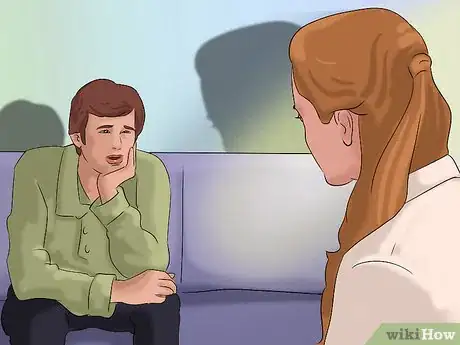

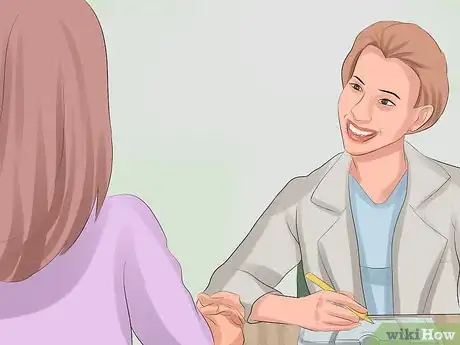
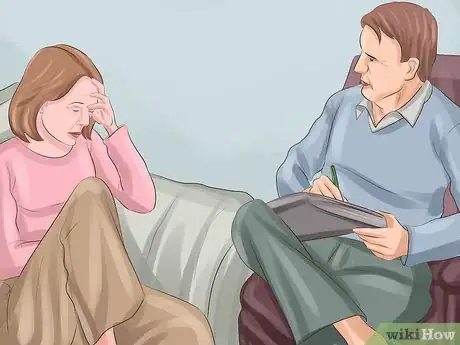








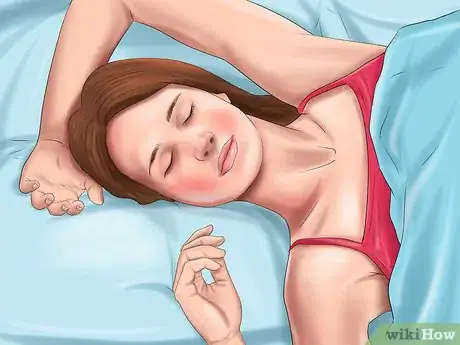

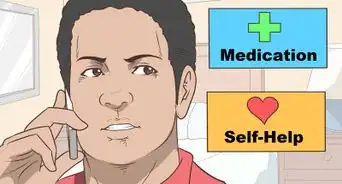


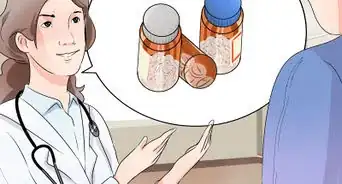
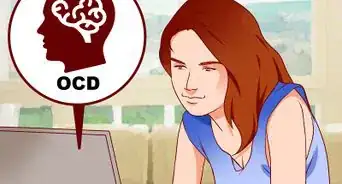
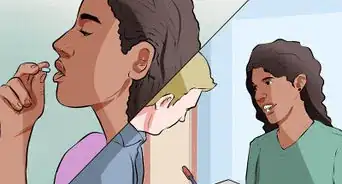
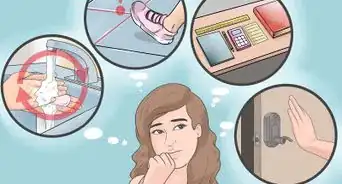
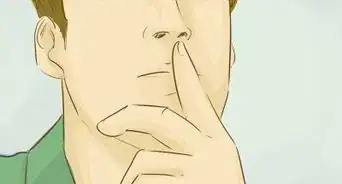











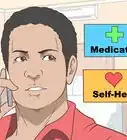






































Medical Disclaimer
The content of this article is not intended to be a substitute for professional medical advice, examination, diagnosis, or treatment. You should always contact your doctor or other qualified healthcare professional before starting, changing, or stopping any kind of health treatment.
Read More...